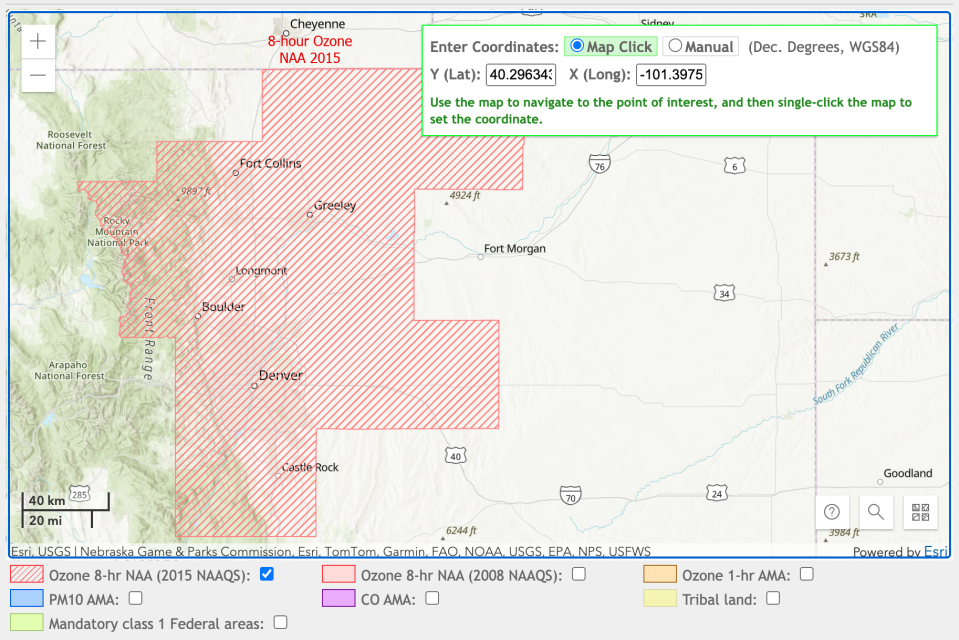Colorado will limit the use of gas-powered lawn equipment in these situations in 2025
The Air Quality Control Commission unanimously approved a regulation to limit the use of certain gasoline-powered lawn and garden equipment Friday.
Here's what to know about the restrictions:
Who will have to limit using gas-powered lawn and garden equipment under the rule?
The restrictions of Regulation 29 start in 2025 and only apply to the use by or contracted for federal, state and local government. Residents who own gas-powered equipment can continue to use it on private property. The limit also only applies to equipment use within the ozone nonattainment area during summertime (June 1 to Aug. 31).
An ozone nonattainment area is an area that does not meet National Ambient Air Quality Standards. The current area under this restriction includes the Denver metro area and the North Front Range.

Regional Air Quality Council Executive Director Michael Silverstein said they proposed the Air Quality Control Commission enact a regulation with a larger scope that would have covered commercial use restrictions and an equipment sales ban prohibition. At the moment, these are not included in the regulation.
The commission noted that the market is already transitioning to electric equipment and will continue to monitor the trend and expects a future hearing “be held no later than the end of 2025” to further assess this.
What lawn and garden equipment will be prohibited?
Only small gas-powered equipment such as “aerators, brush cutters, chainsaws, push lawn mowers, leaf blowers, power washers, rotary tillers, shredders, string trimmers, and other similar push or hand-held gasoline-powered lawn and garden equipment” will be prohibited, according to the approved draft.
Alternatives for the gas-powered equipment include electric and manually operated equipment.
The regulation does not include large equipment “such as riding tractors, due to the costs and limitations on readily available equipment.”
Why was this regulation created?
According to a recent study by the CoPIRG Foundation, a nonprofit that advocates for public health, fossil fuel-powered lawn equipment emits “as much pollution in an hour as driving hundreds of miles in a car.”
The foundation's analysis, which used data from 2020, shows that lawn and garden equipment in Colorado produced the equivalent of 880,554 cars in nitrogen oxides, 170,786 cars in carbon dioxide and 7,204,002 cars in fine particles (PM 2.5).
“Given the significant pollution generated by gas-powered lawn equipment and the severe air pollution problem in our region, I’m glad the state is taking action to accelerate the switch to cleaner, quieter electric lawn equipment,” the foundation’s Clean Air Advocate Kirsten Schatz said in a news release.
‘The big picture’
Regional Air Quality Council Chair Mike Foote said the pollution from lawn and garden equipment, although not as much as the oil and gas sector, is still “more than you would think.”
“The big picture is there will be some emissions reductions which are necessary in order for us to reach attainment and for people to breathe cleaner air. And so we're happy about that,” Foote said.
Volatile organic compounds and nitrogen oxides combine in the atmosphere to form ozone pollution, especially on hot summer days, Silverstein said.
A common way to measure ozone is with parts per billion. In the Front Range region, Silverstein says there are about 80 ppb. From those, around 2 to 3 ppb come from lawn and garden equipment. Although that might not sound like much, Silverstein said, oil and gas can contribute 4 to 7 ppb, in comparison.
The largest source — about two-thirds of that total — comes from “background-pollution,” or pollution from outside the region.
Ryan Maher, an air pollution attorney at the Center for Biological Diversity, said that while this is perhaps a small step in the right direction, it might not be enough.
“I think that while it is something, it's sidestepping some real opportunities," Maher said. “Where the oil and gas industry is the largest human contributor to ozone pollution, the sum of these minute adjustments at the margin, while perhaps a small step in the right direction, are lower priority and somewhat missed the mark.”
This article originally appeared on Fort Collins Coloradoan: Colorado to limit summertime gas-powered lawn equipment use in 2025

